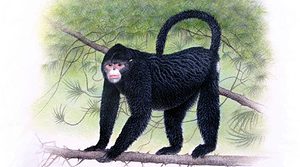
This past year alone, scientists have reveled no less than 208 new species in the Mekong River region of Southeast Asia, among them a psychedelic gecko and a monkey with an uncanny “Elvis” hairdo. According to a report released by the WWF, this slew of newly discovered species are part of highly biodiverse region, currently under threat by habitat loss, deforestation, climate change and overdevelopment.
This particular corner of South East Asia is quite astonishing, as a new species on average is discovered every two days. However, many of these astonishing creatures, still unbeknownst to man, may perish before they can even have the chance to be described. Listed endangered species in this area include tigers, Asian elephants, Mekong dolphins and Mekong giant catfis.
“While the 2010 discoveries are new to science, many are already destined for the dinner table, struggling to survive in shrinking habitats and at risk of extinction,” says Stuart Chapman, Conservation Director of WWF Greater Mekong.
Particularly interesting new animals discovered this past year, include a white snub-nosed monkey whose head sports an Elvis-like hairstyle, which researchers first discovered in the Myanmar’s mountainous Kachin state, as well as a lizard that reproduces via cloning without the need for male lizards.






